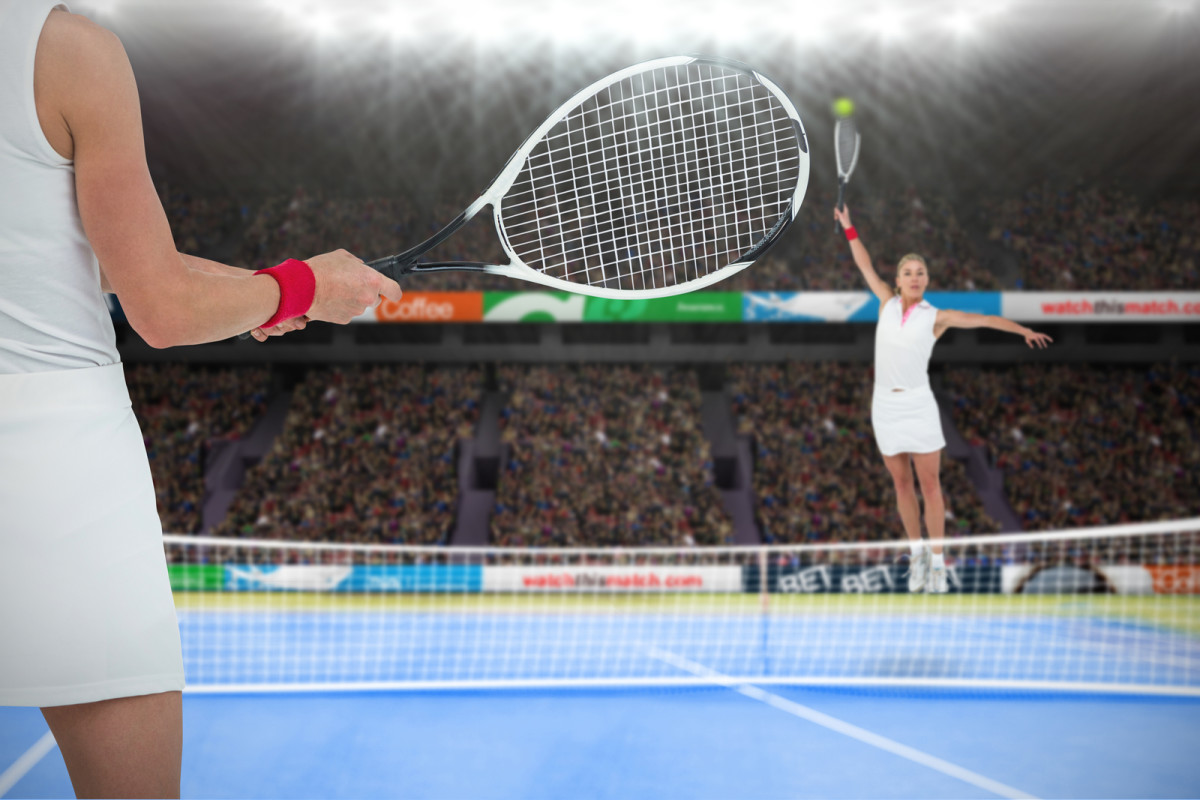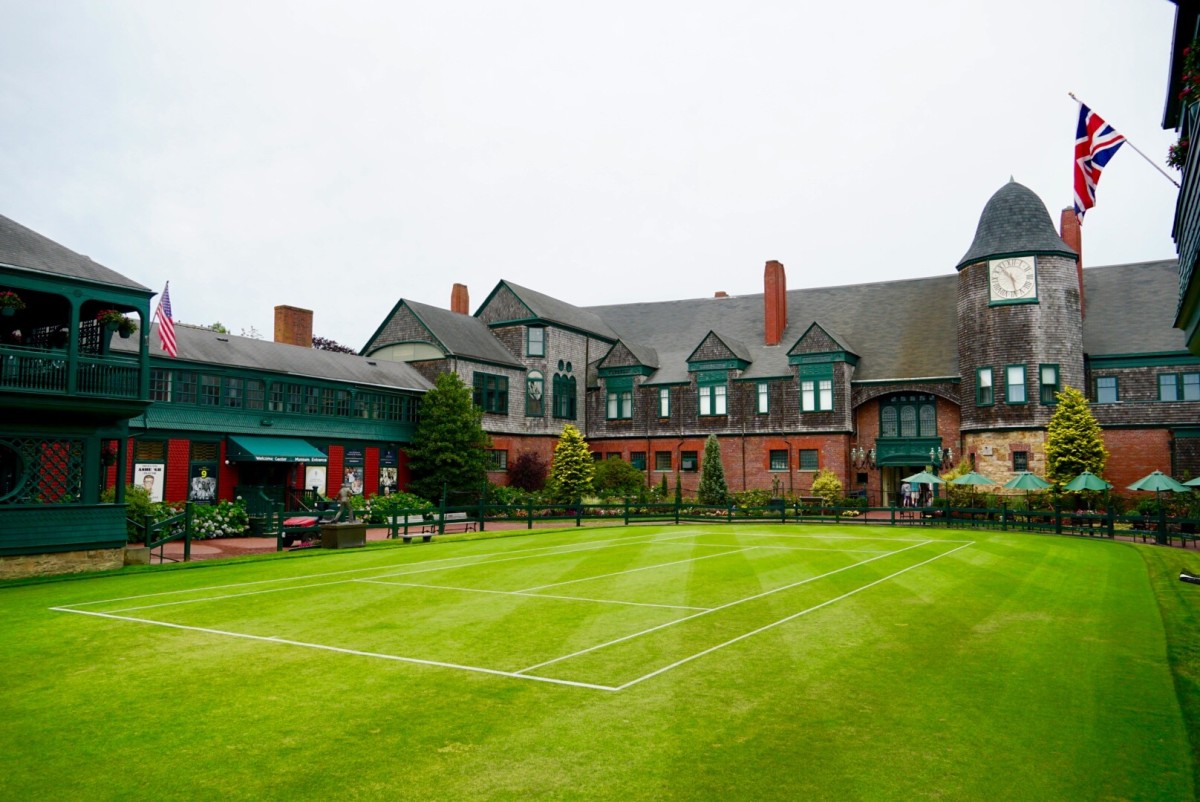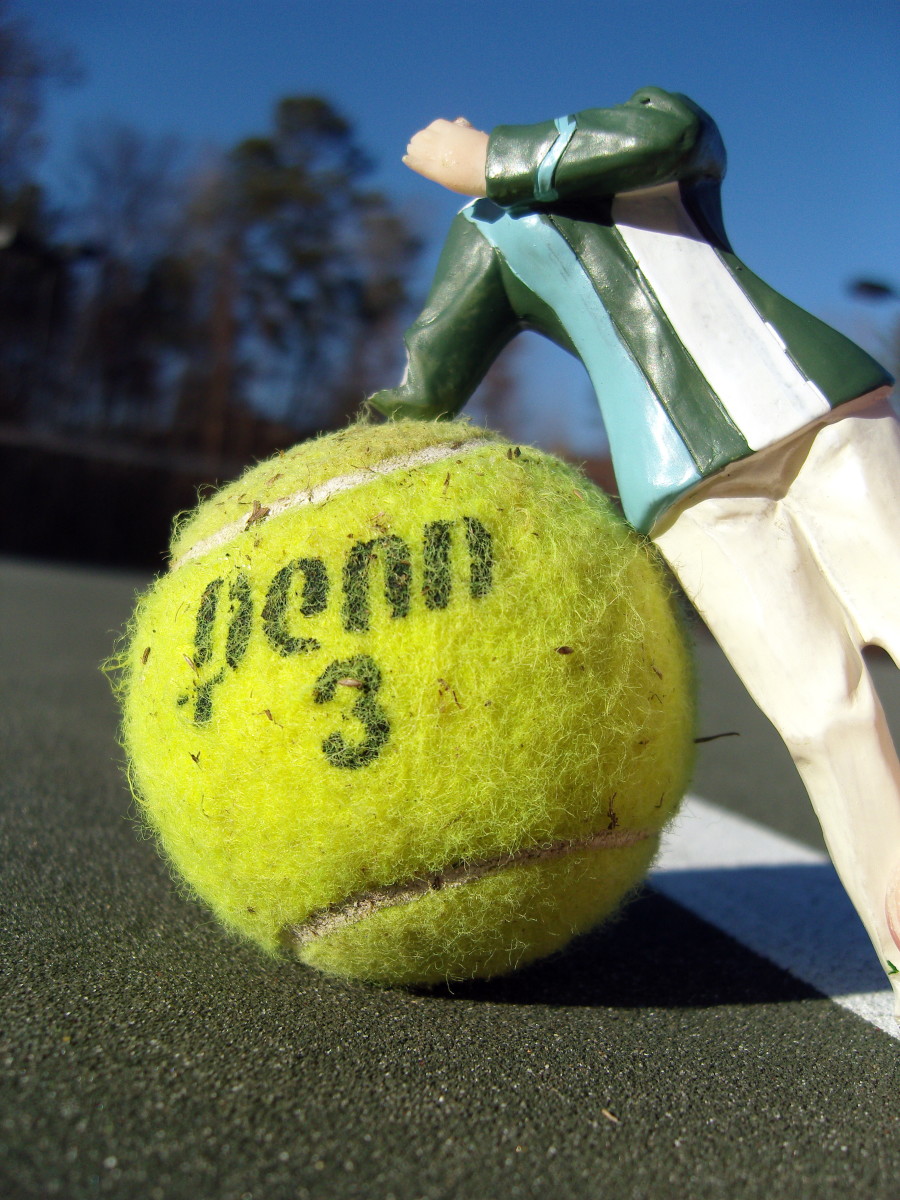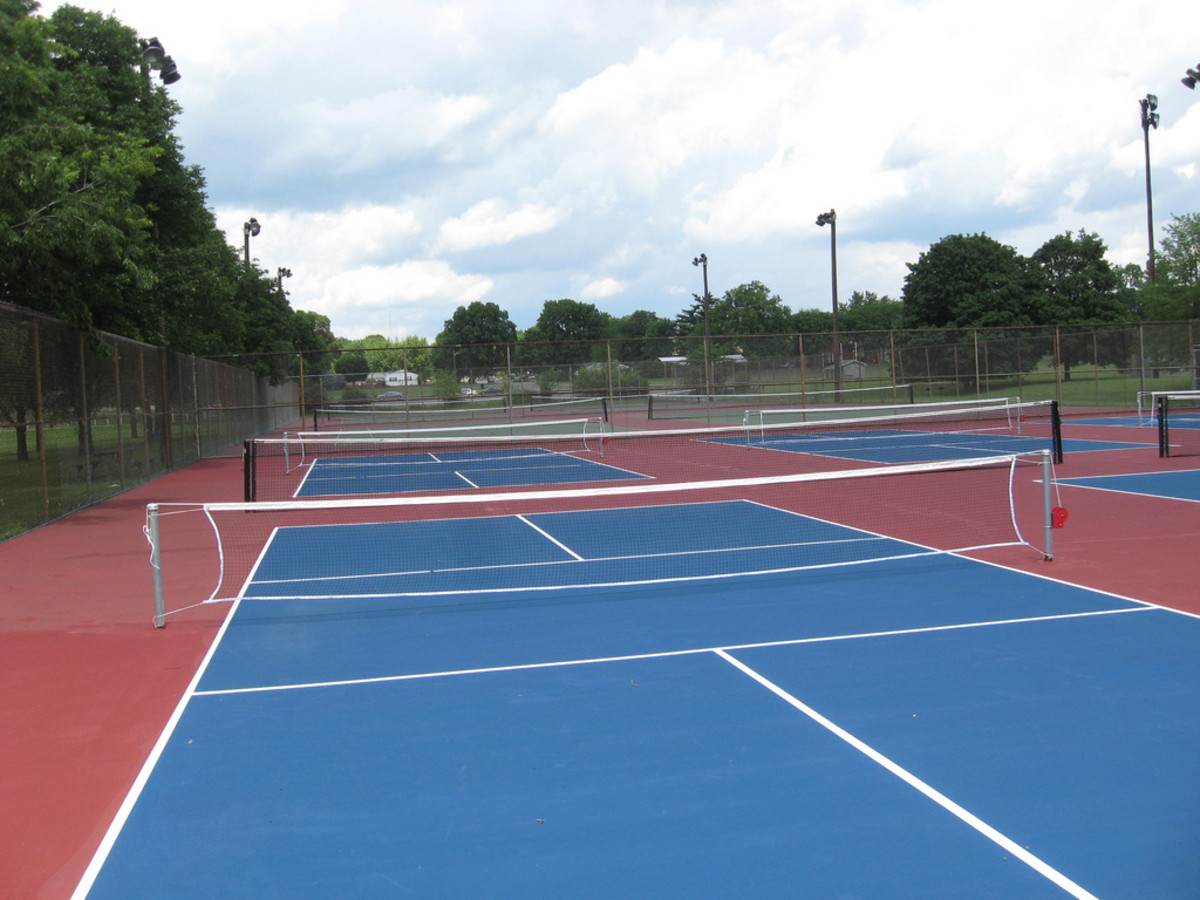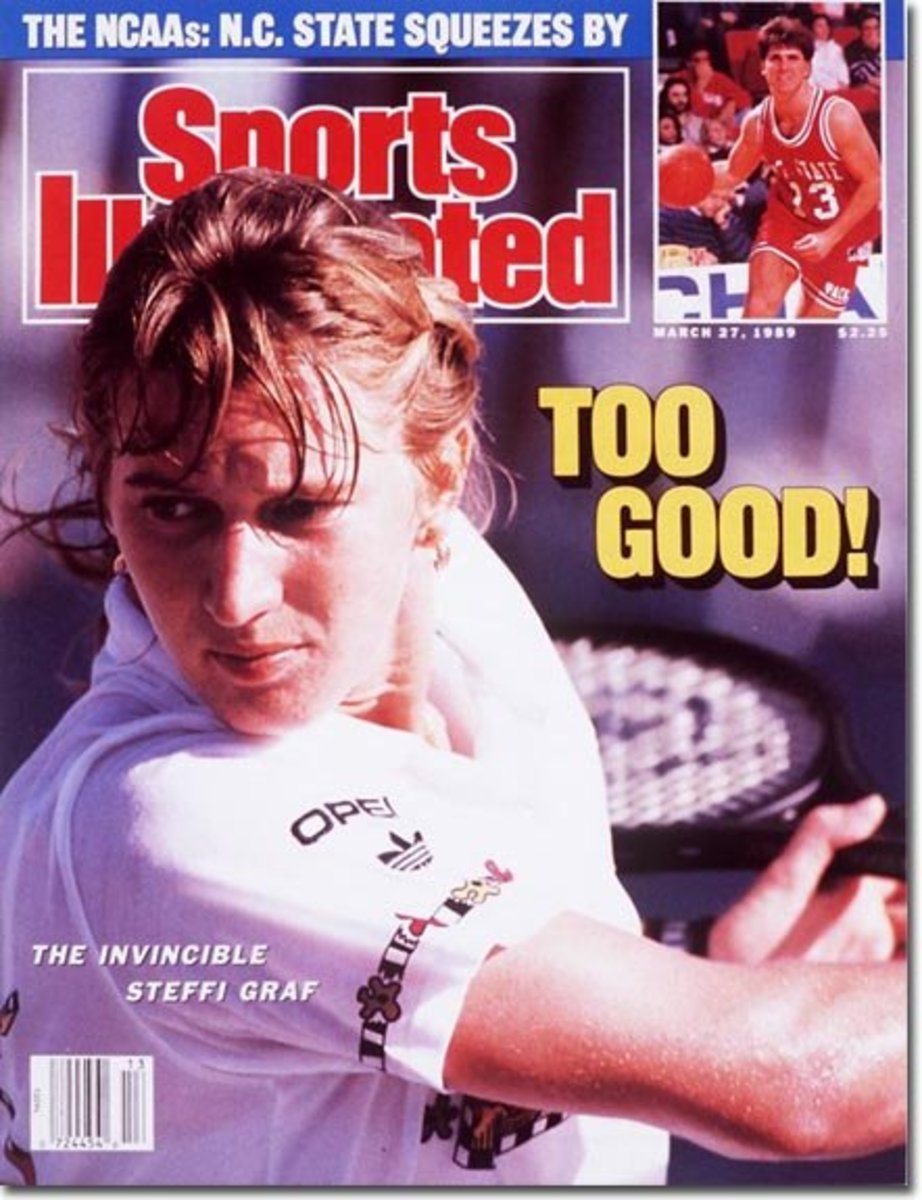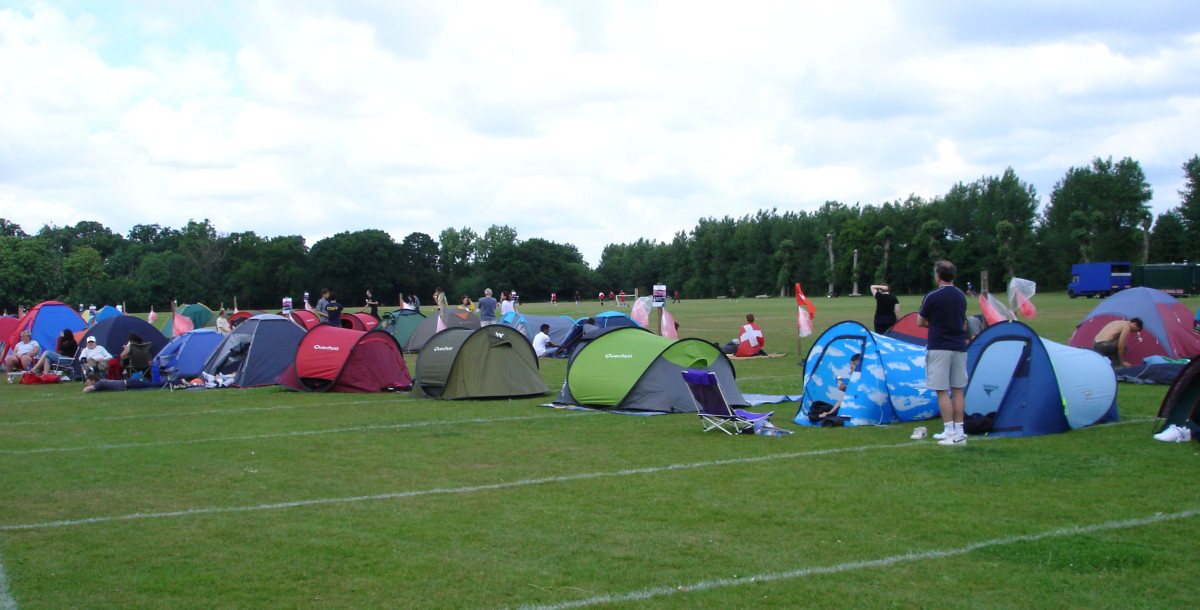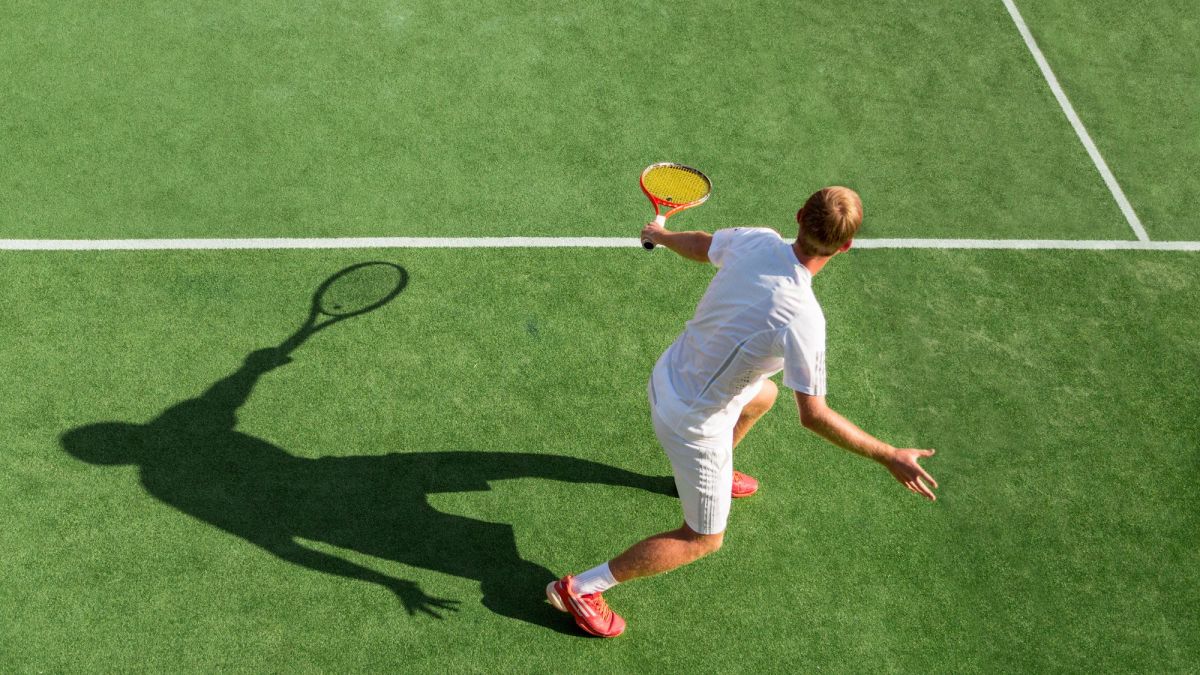How to Practice Tennis
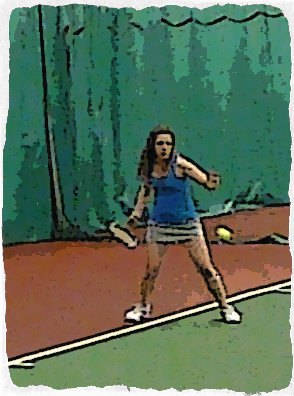
I never knew that much about tennis until, at my 8 year-old daughter's group lesson, the tennis pro stuck a racquet in my hand and told me to give it a try. "Hold out your hand like you're going to shake hands," he said. I did as I was told, hand outstretched in greeting. He held the racquet with it's face perpendicular to the floor and placed it in my awaiting grip. Next, he gently hit a ball to me. I swung, too hard, and hit it out of the court. It felt amazing. The pro, an open and friendly young man, suggested I attend an adult clinic. He was very experienced at recruiting new players and I think he recognized the look in my eyes. He knew he had me hooked.
Tennis: A sport for life.
Tennis is a fun game to play, regardless of your age. At city parks and local tennis centers, you can see everything from 5 year-olds ripping cross-court groundstrokes to 85 year-old women creating wicked spins with a flourish of the racquet. Like golf, it is a life-sport, one you don't have to give up after high school or college. Unlike golf, it is a fairly inexpensive sport to get into and doesn't require a huge amount of time to play. After I hit my first forehand, I stopped golfing. With young children, it was too difficult to spend the necessary 4½ hours to complete a round of golf. Most social tennis matches take around 1½ hours and, when playing a match, you are moving around the entire time. For young and old alike, It's is a great way to get a cardio workout.
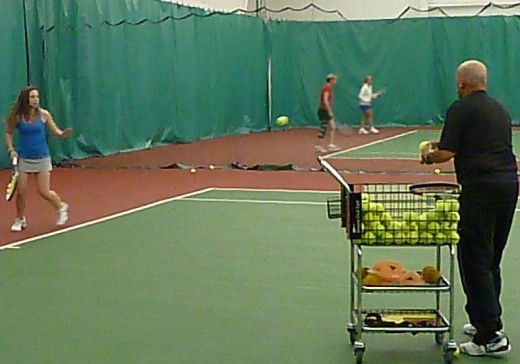
How to Practice Tennis
In order to get better at anything, you have to practice. Tennis is no exception. To learn the game, many beginning players watch professional tennis. It's inspiring to see players like Serena Williams or Roger Federer who hit the ball so cleanly. Getting to be as good as professional players is highly unlikely but, with proper practice, you can get good enough to be able to play the game at a competitive level.
There are four steps to becoming a better tennis player. Bill Graves is a USPTA Teaching Professional at Peak Health and Wellness Center in Coeur d'Alene, Idaho. According to Graves, in order to improve your game, these steps must be completed in order.
- Consistency. This means that you can keep a rally going with a partner and keep the ball in the court.
- Accuracy. Once you've establish consistency you can work on placement. Instead of just trying to keep the ball in the court, try placing it in a certain place.
- Spin. Putting spin on the ball can help you to increase your consistency and accuracy. Top spin, created by brushing up on the ball, makes it spin forward and will help your ball stay in the court because it will drop quicker when heading toward the ground. A player should master top spin before developing other types of spin.
- Power. Adding power to your tennis stroke will create more pace. "Most players want to start with power," says Graves. He says players should really try to master these skills in order. Power should be added once you have learned consistency, accuracy and spin.
Working on these four steps in order will help you to become a better player. I must admit, I, like many, started by working on power. It just felt so good to hit that fuzzy, yellow ball as hard as I could. What that meant for me, though, is that when I hit the ball in a match, one way or another, the point was going to end. I either hit a winner or I hit the ball into the wall and there was no in-between. As I improved my game, I gravitated to the "smarter not harder" theory of tennis. I learned that consistency, accuracy, and spin was way more important than power. Now that I've learned those three skills, I am now working on adding the power back into my game.
Tennis Terms.
Deuce side of court: The side of the court on your right hand side. Play begins on the deuce side of the court.
Ad side of court: The side of the court on your left side of the court.
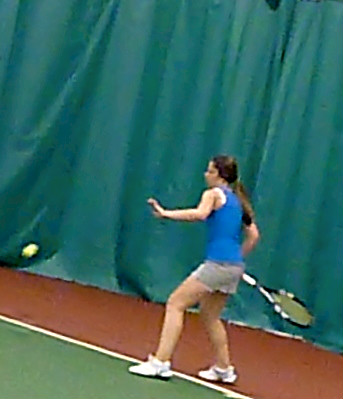
How to Practice tennis with a friend.
You can improve your game and have fun by practicing with a friend or tennis partner.
- Mini-tennis. When asked about drills players can do together, Graves said it is important to remember mini-tennis. Mini-tennis is a warm up in which each player stands at the service line, on opposite sides of the net, and gently hits the ball back and forth. "The purpose of a warm-up," says Graves, "is to concentrate on contact, balance and the use of the opposite hand by eliminating backswing and follow-through." Mini-tennis is an excellent drill to help you work on those skills. "If you can master mini tennis, you can master maxi-tennis," states Graves. "Maxi-tennis" would be playing tennis using the entire court. Start the mini-tennis in the middle and then move to the alley. Next. work on cross-court mini-tennis at an angle from both the "deuce" and the "ad" court.
- Active volleys. After completing some mini-tennis, working on one or two minutes of active volleys will get you warmed up. A volley is simply hitting the ball in the air before it bounces. When working on your volleying, you can focus on keeping your racquet up and in front of you. Focus on your offhand. If you keep your off-hand close to your racquet hand (as if they are cuffed together) you will naturally keep the ball in front of you and be more successful at the net. Most of the volley errors I see happen when the ball gets behind a player. That causes the ball to either go out of the court or hit the bottom of the net.
- Ground strokes. Move back to the baseline and begin hitting ground strokes. Count aloud the number of balls you have hit consecutively. Set a goal for how many consecutive balls you can hit with your partner without making an error. You can also work on cross court groundstrokes and down the line groundstrokes.
- Serve and volley. I play a lot of doubles tennis so learning to serve and volley is very important. Focus on cross court play by approaching to a volley position after you serve. Finish out the point by continuing play cross-court until the point is won. This also helps to improve accuracy.
Books you should read.
How to Practice tennis by yourself.
Sometimes you can't find a partner who wants to practice. You can practice by yourself.
- Hit the wall. Most tennis courts have a wall for players to hit a ball against. They usually have a line that marks the height of a net. Sometimes, when hitting with a partner, it's hard to get a rally going. The great part about a wall is, the ball always comes back. The wall is the most consistent opponent you will ever find.
- Practice your serve. Grab a basket of balls and serve. You can take lessons on serve technique but the only sure way to improve is to practice. Work on your first and second serve from the deuce and ad side. Try to pick spots to place your serve. You can use cones or hula hoops as targets.
"Perfect
practice
makes
perfect."
Take a tennis lesson.
I once heard a coach say that he didn't like the idiom: "practice makes perfect". "Practice doesn't make perfect," he exclaimed. "Perfect practice makes perfect." He was right. It's important to take a lesson every now and then to work on technique so that when you are practicing with a partner or alone, you are working on the skills correctly. You can locate a teaching professional in your area by going to www.uspta.com, www.usta.com, or by contacting your local tennis center or parks and recreation department. If you are new to tennis or still working to improve, I strongly suggest you find a teaching professional that you like and sign up for some lessons.
If you remember the four steps to becoming a better player, take a few lessons, and take the time to practice with a partner or by yourself you will improve your game. And of course, never forget: Perfect practice makes perfect.


